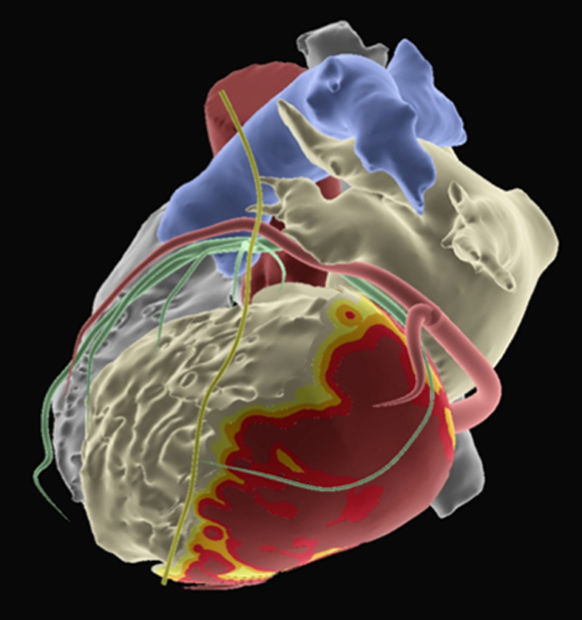Nothing I can say, a digital twin of the heart
- May 9, 2022
- Steve Rogerson
Steve Rogerson looks how IoT technology is making a difference in treating cardiovascular disease.

Two of my sporting passions came to mind this week and both with IoT connections for cardiovascular care.
The first was Formula One motor racing. My regular readers may recall just under a year ago how my Apple Watch warned me I was having atrial fibrillation, which meant I could get timely medical intervention, though at the time I was more annoyed at being in hospital rather the grandstands at Silverstone watching the British Grand Prix.
I have a bit of a history with heart problems and a couple of years earlier I was in hospital having a catheter ablation operation to fix my supraventricular tachycardia (SVT), where the electrical signals in the heart form a feedback loop causing rapid heartbeat.
The operation is fairly straightforward and involves burning the surface of the heart to cut off the electrical path. The problem is, so they know where to burn, they have to force the heart into having an SVT, which is not very comfortable and slightly dangerous.
However, a recent development could change all that. A French company called InHeart has started trials of a digital twin of the heart. Now, we have all heard of digital twins of buildings, cars, and even cities. But of the heart? How cool is that?
If successful, this means surgeons could be guided on where to do the ablations based on the digital twin rather than conventional methods.
One of my other passions is football, or what the Americans call soccer. And this came to mind as the English season is drawing to its close.
Now, I can forgive anyone outside of England not having heard of a football club called Brentford. This once-small west London team had until recently spent most of its time in the third and fourth tiers of English football. A year ago, they astonished everyone by being promoted to the Premiership.
And they got off to a cracking start but then the losses started to build up and they went into freefall; relegation looked a possibility. However, a rather brave signing changed all that.
The player was Christian Eriksen, who also had heart problems a year ago when he collapsed during an international match after suffering a cardiac arrest. Quick reactions by the medical staff at the stadium saved his life and he has since been fitted with a clever bit of IoT technology called an implantable cardioverter defibrillator. This not only allows remote monitoring of his heart but can even restart it automatically if it stops again.
Everyone at the time though thought that meant the end of his football career and it did stop him returning to Inter Milan as Italian rules prevent anyone with such a device from playing professional football. They may have to think again.
This is because Eriksen was keen to return to the game and Brentford decided to take a chance on him, something the bigger clubs were not willing to do. The result has been dramatic and his skills have helped lift Brentford clear of the relegation zone and guaranteed them another season in the top flight.
This has also now attracted the interest of some of the top clubs as he has proven he can still perform with the device implanted, which could be bad news for Brentford as he is likely to be enticed away because, let us be honest, there is no chance of Brentford reaching any of the major European competitions in the near future.
Now, we all know this could still go tragically wrong but it has brought a piece of clever medical technology into the limelight and that has to be good for the industry. From an Apple Watch to an implantable cardioverter defibrillator to a digital twin of the heart, IoT technology is making a real difference in cardiovascular care.





